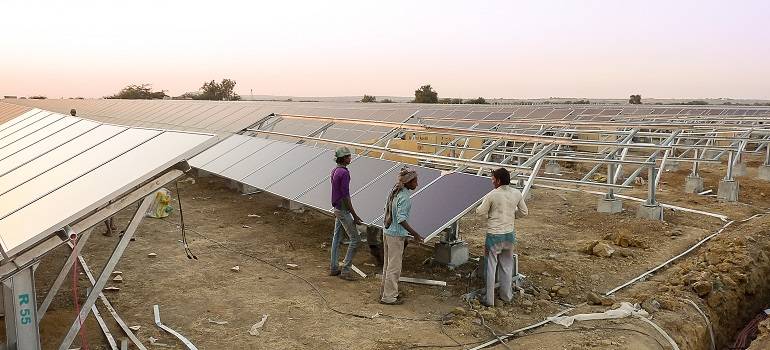Rising Solar Capacity Propels India Towards Environmental Challenge
A recent study conducted by the Ministry of New and Renewable Energy (MNRE) and the Council on Energy, Environment and Water (CEEW) sheds light on India’s mounting solar waste predicament. The findings reveal a significant increase in solar waste generation, projecting a rise from 100 kilotonnes (kt) in the financial year 2022-2023 to a staggering 600 kt by 2030.
India’s remarkable growth in solar capacity, which has multiplied by 23 times over the past decade to reach 66.7 GW as of March 2023, underscores the urgency of addressing this issue. With plans to escalate installed solar capacity to 292 GW by 2030, effective management of solar waste becomes imperative for environmental, economic, and social reasons.
The study delineates solar waste into two primary categories: manufacturing waste and waste from the field. While the analysis focuses solely on waste from the field, it encompasses various streams, including transportation and handling, damage incurred during the modules’ lifetime, and end-of-life disposal.
Key insights from the study highlight the disproportionate contribution of certain states to solar waste production. Rajasthan, Gujarat, Karnataka, Tamil Nadu, and Andhra Pradesh emerge as frontrunners due to their current substantial solar capacity and ambitious expansion plans. By 2030, these states are projected to account for around 67% of solar waste generation.
Moreover, the report underscores the strategic significance of minerals contained in discarded solar modules, such as silicon, copper, tellurium, and cadmium. Recognized as critical minerals for India’s economic development and national security, their efficient recovery becomes paramount.
Addressing the challenge of solar waste necessitates proactive measures and policy interventions. The report advocates for the establishment of a comprehensive database to track installed solar capacity, facilitating informed decision-making and waste estimation. Additionally, policymakers are urged to incentivize recyclers and encourage stakeholders to adopt effective waste management practices.
A crucial aspect emphasized in the study is the need to create a robust market for solar recycling. Contrary to common perception, solar waste generation extends beyond the end-of-life phase, emphasizing the immediate and future significance of addressing this issue. The report delineates two approaches to recycling: conventional bulk material recycling and high-value recycling, the latter offering enhanced recovery of valuable materials like silver and silicon through advanced processes.
In essence, India stands at a critical juncture in its renewable energy journey, where the management of solar waste emerges as a pressing concern. By implementing the recommendations outlined in the study, India can navigate this challenge while advancing towards a sustainable and circular economy in its solar industry.


